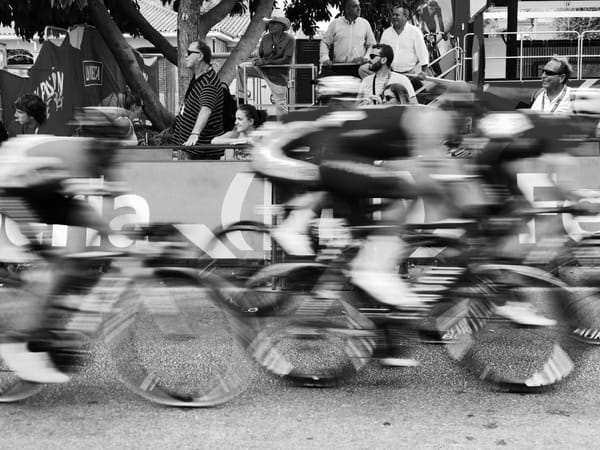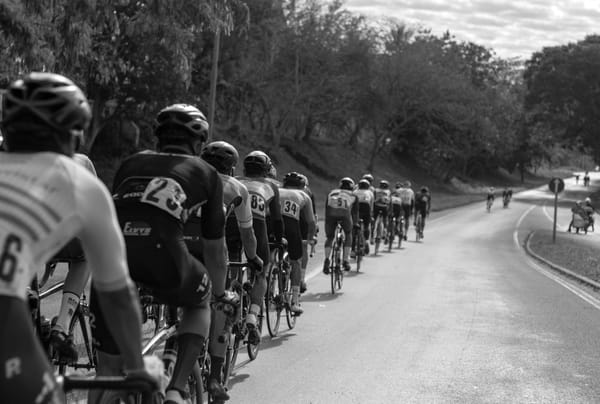Percent Grade in Cycling: What It Means and Why It Matters

Cyclists love to swap stories about conquering steep hills, often throwing around numbers like “8%” or “12%” to describe a climb. These numbers refer to percent grade, a key concept in cycling that measures how steep a road or trail is. Understanding percent grade can help you gauge a climb’s difficulty at a glance and plan your strategy accordingly. In this article, we’ll explain what percent grade means, how it’s calculated, and why it’s important across road cycling, mountain biking, and gravel riding. We’ll also share practical tips on using percent grade knowledge to improve your training and highlight famous climbs where gradient plays a pivotal role.
What is Percent Grade in Cycling?
In cycling, percent grade (also called gradient or slope) refers to the steepness of a section of road or trail. A flat route has a 0% grade, while a higher percentage means a steeper incline. For example, a climb with a 10% grade is significantly steeper than one with a 5% grade. If you encounter a negative grade, that indicates a downhill. In simple terms, percent grade tells you how much elevation you gain (or lose) for a given horizontal distance.
How is Percent Grade Calculated?
Percent grade is calculated using the “rise over run” formula from basic math. The formula is:
Percent Grade = (Vertical Rise ÷ Horizontal Run) × 100This means you divide the elevation gain (“rise”) by the horizontal distance covered (“run”), then multiply by 100 to get a percentage.
Example: If you climb 50 meters vertically over a 1,000 meter stretch, the grade is (50/1000) × 100 = 5%. A road that climbs 10 m over 100 m has a 10% grade, and so on. By this same logic, a 100% grade would be a 45° slope (rising one unit for every one unit forward)ice, most paved roads are far less steep – for safety, many highways aim not to exceed about 5% grade .
Tech Note: Percent grade is typically based on horizontal distance. If you used the actual road distance (which is a bit longer because of the incline), the percentage would come out slightly lower. For moderate gradients, the difference is negligible – so the straightforward rise/run ×100 formula works fine for cyclists.
Why Percent Grade Matters for Cyclists
Knowing the percent grade of a route is more than just trivia – it’s valuable information that can influence your pacing, gear choice, and even whether you can ride a section at all. Here’s why gradient matters in different cycling disciplines:
Road Cycling – Long Climbs and Pacing
In road cycling, percent grade is crucial for understanding and tackling long climbs. Big mountain ascents in races like the Tour de France are often categorized by their length and average grade . Generally, the loeeper the climb, the higher its category. For example, a short 2 km hill at ~5% might be a modest Category 4, while a giant alpine pass averaging 8% over 15 km would be Category 1 or even “Hors Catégorie” (beyond category). This classification highlights how both distance and steepness make a climb challenging.
For a moderately experienced road cyclist, knowing the grade helps with pacing. An 8% grade over several kilometers will likely force you into your lower gears and a steady, seated grind. In contrast, a gentle 3% grade might be climbed faster, even out of the saddle at times. If you see that a climb averages 5% but kicks up to 10% in sections, you can save energy for those harder pitches. Many cyclists use bike computers or route profiles to check gradient in real time, adjusting effort to avoid blowing up on a steep section. In essence, percent grade is a guide to how intense a climb will feel: every additional percentage point is noticeably harder on the legs, especially on long climbs .
Gradient also influences r road bikes. Steeper hills require easier gears (more teeth on the cassette, or a compact crank) to maintain a comfortable cadence. A rider planning to tackle a route with sustained 12% grades will outfit their bike with climbing-friendly gears. On moderate grades, you might get by with standard gearing. Thus, understanding the grades on your route helps ensure you have the right equipment and strategy.
Mountain Biking – Steep Trails and Traction
In mountain biking, percent grade can be even more critical, though it’s often discussed in slightly different terms. Trail climbs are usually shorter than road climbs but can be much steeper and on loose or uneven surfaces. It’s not uncommon to encounter pitches well above 15% on technical trails. Knowing a trail’s steepness helps you anticipate sections where you might need to get out of the saddle, shift your weight forward, or even dismount and hike if it’s too steep to ride.
For mountain bikers, understanding gradient is tied to skills and traction. On a 20% uphill trail covered in roots or gravel, maintaining momentum and traction is a real challenge. By recognizing a steep grade coming up (from a map or trail description), you can prepare by shifting to an appropriate gear before the climb and keeping your cadence high to avoid stalling. You’ll also know to stay seated (to keep weight on the rear wheel) or choose a line with better grip. In downhill mountain biking, negative grades (steep descents) are similarly important to gauge, but those are usually discussed in terms of degrees of slope or just called “steep drops.” Either way, percent grade gives mountain bikers a sense of which climbs are rideable and which might be pushing the limits of balance and grip.
Gravel Riding – Gradients on Loose Surfaces
Gravel riding often combines elements of road and mountain biking. Routes might cover hundreds of miles of rolling hills on dirt and gravel roads. Percent grade is a handy metric here too, as gravel climbs can be lengthy and demanding when the surface is loose. A gravel road at 8% grade can require almost as much effort as a 10% paved climb because your tires sink and slip on the loose terrain. If you’re tackling a gravel grinder event or bikepacking trip, knowing the grades helps in managing energy over long distances.
On gravel, steep grades force you to balance power and traction carefully. You may need to remain seated and smooth in your pedal stroke to avoid losing traction on a 10–12% gravel incline. If a course or route profile shows extended sections above, say, 8-10%, you’ll want to pace yourself and perhaps use slightly lower tire pressure for better grip. Technical gearing is also a factor: many gravel bikes now use gearing borrowed from mountain bikes, with lower ratios to handle steep off-road climbs. By understanding the percent grade of key climbs on your route, you can gauge where the hardest parts will be and plan feeding or recovery accordingly (for instance, eat a snack before a long 5% grinding ascent or conserve energy if a punishing 15% wall is looming).
Using Percent Grade to Improve Your Riding
Percent grade isn’t just a number in a guidebook – you can use it to ride smarter and train better. Here are some practical ways to leverage gradient knowledge:
- Pacing and Effort Management: Use grade information to pace yourself on climbs. If you know the next mile averages 8% grade, settle into a sustainable rhythm rather than sprinting. On rolling terrain, anticipate that a short hill of 12% will spike your heart rate, so recover on the preceding flat. This strategic pacing, guided by gradient, helps you avoid exhausting yourself too early on a big climb.
- Gear Selection and Bike Setup: Before a ride or race, check the route’s elevation profile for steep grades. This lets you choose appropriate gearing. For example, if the course features 15% grades, you might install a cassette with a larger largest cog (e.g. 32T or 34T) or use a smaller chainring. Having the right gears means you can keep pedaling at a comfortable cadence on steep climbs instead of grinding to a halt. Bike setup (tire choice, suspension settings for MTB, etc.) can also be tuned if you know the route has prolonged steep sections or rough, steep climbs.
- Hill Training and Intervals: Integrate percent grade into your training plan. Hill repeats are a classic workout for cyclists – and knowing the grade helps target specific energy systems. For instance, doing short sprints on a 10% hill builds explosive power, while doing longer steady-state efforts on a 5% incline builds endurance. If you’re preparing for a race with lots of climbing, try to train on grades similar to the event. A smart trainer or apps like Zwift even let you simulate specific gradients during indoor workouts, so you can practice maintaining power on (virtual) 8% or 10% grades. Over time, you’ll get a feel for how different percentages feel in terms of effort, which is great feedback for pacing in real events.
- Race and Ride Strategy: In competitions or long group rides, understanding the course’s grades can inform your strategy. Climbs are often where races blow apart. If you know a decisive climb averages 9% for 3 km, you might plan to attack there or be extra cautious to stay with the group. Knowledge of percent grade also helps mentally – you can break a climb into sections (for example, “it’s 2 km at 6%, then a brutal final 500 m at 12% – hang in until the top”). Many famous races use steep sections to create drama; as a rider, you’ll handle these moments better if you anticipated them from the course profile.
- Personal Challenges and Progress: Tracking the grades you can conquer can be motivating. Maybe last year a 10% hill forced you to walk, but this year you rode it all the way – that’s tangible progress. Or you might set a goal to seek out a local hill with a 15% grade and climb it without stopping. Understanding percent grade gives you a common language to compare climbs anywhere in the world, and to chart your improvement as your legs and lungs get stronger.
Famous Climbs and Real-World Examples
Nothing brings the concept of percent grade to life better than real climbs that cyclists talk about with equal parts awe and agony. Here are a few famous examples where percent grade is a defining feature:
- Alpe d'Huez (France): Perhaps the most iconic Tour de France climb, Alpe d’Huez gains about 1,071 meters over ~13.2 km with an average gradient of 8.1%. The first 2 km are especially brutal, staying above 10% grade before easing slightly. This long, steady ascent has 21 hairpin bends and has been the scene of legendary cycling battles. An 8% average means it’s a grind nearly all the way up – a true test of endurance and pacing.
- Alto de l'Angliru (Spain): A climb so steep it’s become mythical in pro cycling, the Angliru averages around 10% over 12.5 km and maxes out at an unbelievable 23–24% gradient in sections. Used in the Vuelta a España, it is considered one of the most demanding road climbs in the world. The steepest ramps on the Angliru are where races are won or lost – at those grades, even professional riders weave across the road, and maintaining momentum is a huge challenge. It’s a perfect example of how extreme percent grades can break even the fittest athletes.
- Monte Zoncolan (Italy): An Italian rival to the Angliru’s reputation, Monte Zoncolan is shorter (about 9–10 km) but averages roughly 11–12% depending on the side, with sustained stretches well above 15%. In fact, the final kilometers are consistently over 12% and include pitches above 20%, topping out around 22–27% at the fiercest point. Zoncolan is “all about gradient” – it’s a climb where the sheer steepness, more than the length, is the main difficulty. When the Giro d’Italia includes Zoncolan, it inevitably becomes a spotlight stage, as riders fight gravity on slopes that look almost vertical on TV.
- Mur de Huy (Belgium): A short climb that features as the dramatic finish of the one-day race La Flèche Wallonne. The Mur de Huy is only ~1.3 km long, but it averages about 9–10% and has a notorious switchback where the gradient hits 26% at its peak. That brutal wall-like section often decides the race, as punchy riders who can surge up a 20%+ ramp excel here. For amateurs, the Mur is a reminder that even a short hill can feel interminable if it’s steep enough! It’s an iconic example of a mur (French for “wall”) – a climb so steep it feels like scaling a wall.
- Mount Washington (USA): Known as one of the toughest hillclimbs for amateurs, the Mount Washington Auto Road in New Hampshire gains about 1,400 meters over just 12.2 km (7.6 miles). That’s roughly 12% average grade with extended sections of 18%, and a notorious final 50-yard stretch at 22%. Unlike the European climbs above, Mount Washington is an individual time trial race for cyclists, but the challenge is similar: maintaining power on a relentless double-digit grade. The weather and wind can be harsh, but it’s the unyielding steepness that earns this climb its reputation. Riders who finish can truly say they’ve battled one of the steepest road climbs out there.
These examples show how percent grade defines the character of a climb. Whether it’s the steady relentlessness of an 8% alpine ascent or the leg-burning ramps above 20% on a short hill, the gradient shapes the riding experience. By studying the percent grade of famous climbs (or your local hills), you gain insight into why they feel easy or hard and how to approach them.
Conclusion
For the cycling enthusiast, percent grade is more than a number on a map – it’s a fundamental part of the sport’s challenge and allure. Steep grades push our limits and create epic moments in races, while gentler grades let us cruise and recover. By understanding what percent grade means and how to use that knowledge, you can train smarter, choose the right equipment, and tackle rides with greater confidence. Whether you’re grinding up a long 6% ascent on your road bike, muscling over a 15% dirt ramp on your mountain bike, or rolling through hilly gravel backroads, knowing the gradient helps you prepare mentally and physically. So the next time you hear cyclists swapping tales of a “brutal 12% climb,” you’ll not only know exactly what that means – you’ll be ready to face it head on, turning those numbers into motivation for your own cycling adventures. Keep climbing and enjoy the ride!





